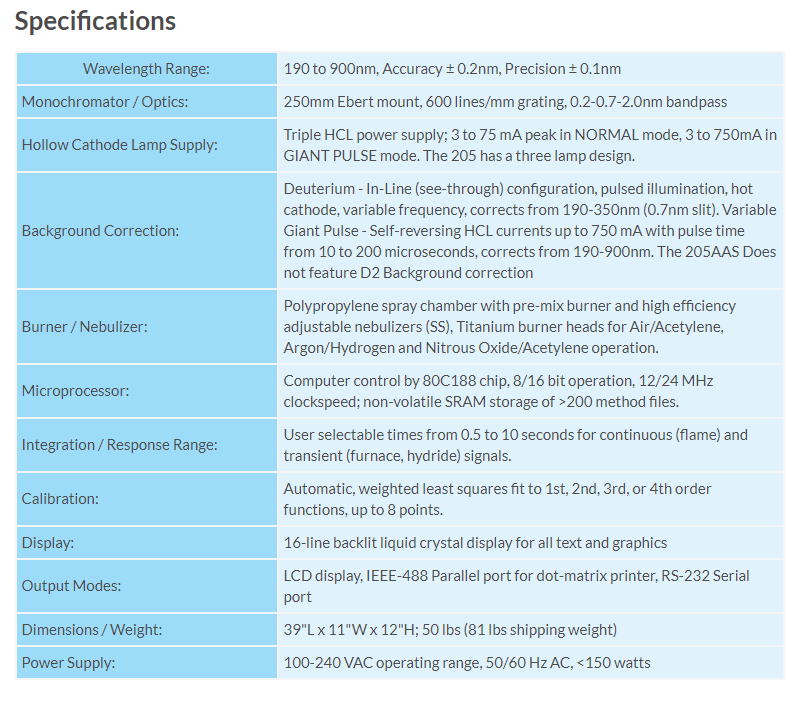210VGP Atomic Absorption Spectrophotometer
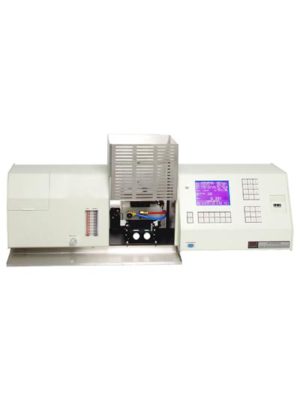
210VGP Atomic Absorption Spectrophotometer
We make AA Easy!
Our goal here at Buck Scientific is to make instruments that are easy to use, and maintain for many years, at minimal expense. We take a hands on approach to customer service by answering our own phones. You can talk to the engineer who assembled your instrument, for quick and friendly support. Call us today with your AA questions 800-562-5566.
- Stable, Reliable, & Easy to use.
- 3 lamp power supply, (1 internal 2 external)
- High energy optical design for better As & Se results
- Compact size and light weight
- Rugged military grade design stands up to years of abuse.
- D2 Background correction
- Free Buck Analyst Software
- Low cost consumables and maintenance
- Made in the USA
Standard Features
The 210VGP is shipped ready for use. All operating conditions are pre-loaded in the internal computer, including lamp settings, secondary wavelengths, and alternate methods of analysis for over 60 elements by flame, furnace, or hydride techniques. The three lamp turret has individual controls for alignment and standby mode to keep lamps warm. Direct report generation to a printer or data linking to the Free Buck Analyst* software package is easily done using the parallel and RS-232 serial ports.
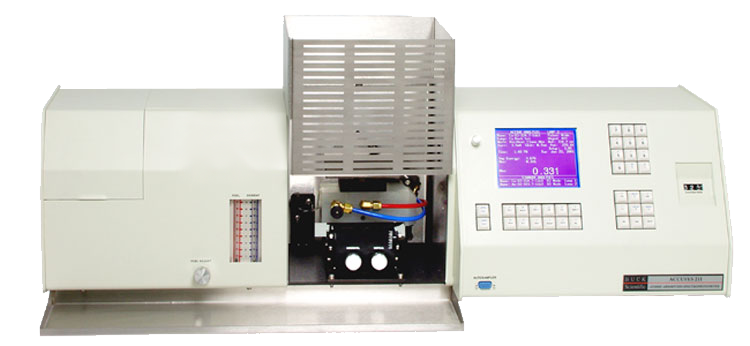
Analytical Performance
The Buck 210VGP is a high energy, microprocessor controlled, single beam atomic absorption spectrophotometer. Solid state electronics and simple optics provide the basis for our superior stability and sensitivity. The Ebert mount monochromator and user-selectable bandwidth gives the system maximum flexibility. Our short-path dynamic nebulizer/burner configuration is highly efficient. An inert needle, precisely positioned in a high flow venturi, delivers the sample to the corrosion proof impact bead. This results in a tremendously high nebulization effect for all types of sample matrices.
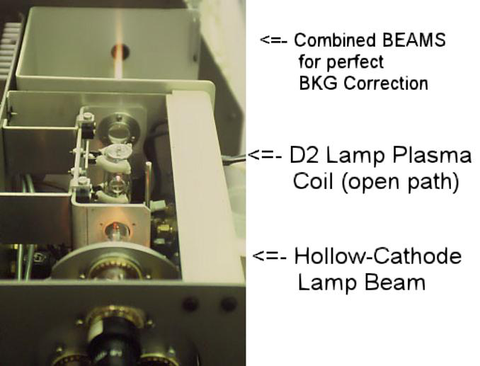
Deuterium Background Correction
This is the oldest and still most commonly used technique, particularly for flame AAS. In this case, a separate source (a deuterium lamp) with broad emission is used to measure the background absorption over the entire width of the exit slit of the spectrometer. In the 210VGP & Accusys 211 the deuterium lamp is in-line with the hollow cathode lamp, thus eliminating the need for a double beam system. The benefits of a single beam system are more energy, smaller size, lower cost, and a more sensitivity.
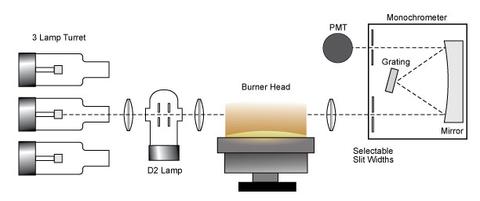
Optical Layout
The Buck 210VGP is a single beam AA which has proven itself worldwide as a workhorse. Our simple, single beam optical layout may buck convention, (no pun intended) but we know it works better. Let us explain.
Double beam instruments were originally designed to overcome poor hollow cathode lamp characteristics, noisy power supplies, drifting detectors & amplifiers, thermal expansion variations in optical components (mirrors, beam splitters, mounts, etc.) By using a high light-loss optical component, the beam splitter, to divide the signal beam from the hollow cathode lamp, served to correct for these low performance components; thus halving the available energy to make a sample measurement, compensation between the reference and sample beams was maintained. In later years, the addition of a deuterium continuum lamp for background correction introduced a second beam splitter; thus cutting the hollow cathode lamp energy in half again. This does not even take in to account the 6-10 additional Mirrors used to define the optical path for these large, heavy and expensive (albeit very stable) double beam AAS instruments.
So, after fixing AA instruments for 20 years, Buck set out to design a single beam AA just to see if it could be done. Well it worked, and since 1992 the 210VGP has been delivering superior results due to it’s simple optical layout providing a high energy throughput.
